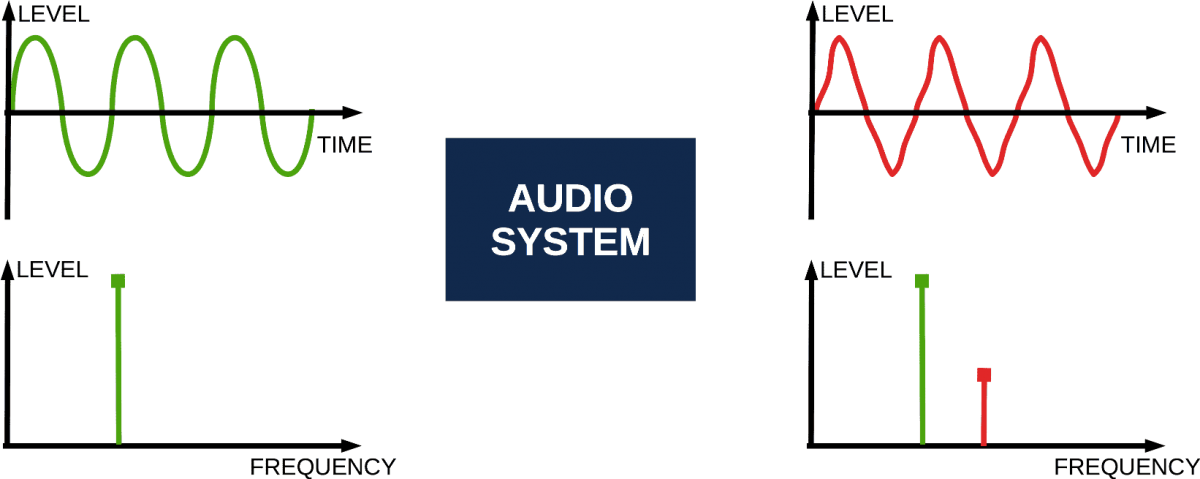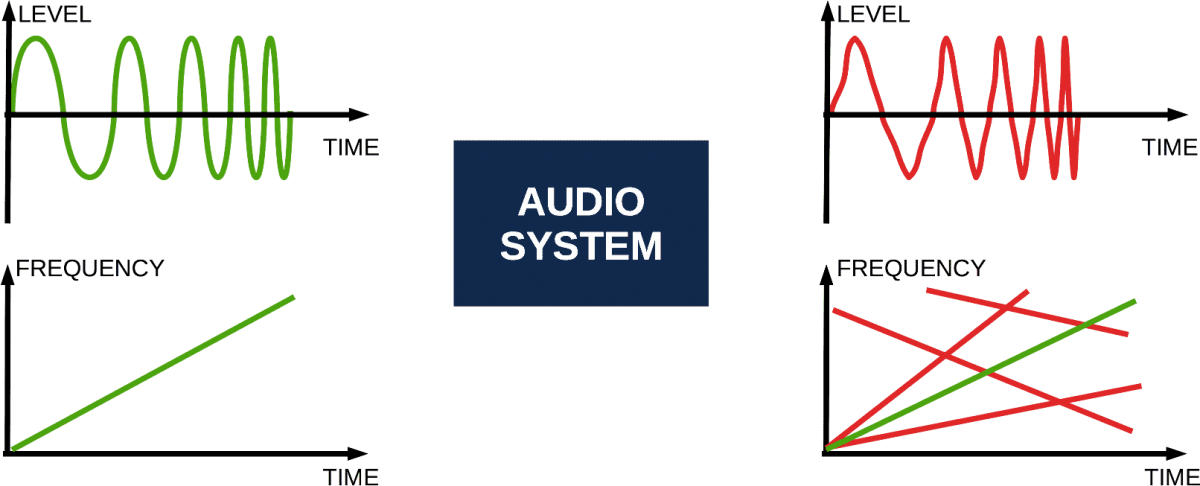
Some people try estimate audio equipment and software quality via spectral analysis of a music.
We can consider music listening impressions as primary quality criteria. Because music playback is final aim of full audio workflow.
However, listening test can give subjectively better impressions by "coloured" (distorted) sound. Such sound does differ from original acoustic sound. So played back music is not same the original sound. But, I suppose, that quality is level of distortions of original sound, isn't it? I.e. lesser distortion is better quality.
Therefore for quality estimation we need to separate original signal and distortions at the output of audio unit (hardware or software).

If you buy "AuI ConverteR PROduce-RD" (2023/12.x version) from 24 August 2023 to 24 October 2023, you will get free update to version 2024 (13.x) after its release.
![video: How to improve sound quality [Your Guide]](/pictures/videopic/sd--nK1n7Im1VKY.jpg)
Back to top
Could the check level of distortions via music?
Theoretically, we can compare music at input and music at output.
But practically it is too difficult. Because music is very complex signal that change its features in the time.
Pure sine
Let's look to simple signals first. At an audio system input we have sine signal. Output response of the audio system contains the input signal and distortions (artifacts).
Sine distortions audio
Real picture is more complicated. There is noise.
We can suggest, that output signal must be fully identical input signal to provide maximal audio quality.
We can't improve objective quality over this.
So in the first approach we should check distortion level to audio quality measuring.
To estimate of distortions, we should see it at the plots obviously. It is easy, if simple signals (like sine) are used.
But pure sine is limited in frequency range estimation ability.
Sweep sine
To estimate full frequency range we can use sweep sine. It is sine with frequency growing with time. In this case we can observe aliases that rise for all signal frequencies into displayed band. Time-frequency diagram is recommended for analysis.
Sweep sine distortions audio
At real diagram we view input signal clearly and easy separate artifacts as distortions.
As example, we can estimate resamplers this way [1].
Music
Music contains infinite harmonic number (sines). These harmonics changes with time. Each of these harmonics generate artifacts. These artifacts are mixed with each other and original signal harmonics.
Therefore we almost can't distinguish original signal and artifacts for such sophisticated test signal. And we can't estimate audio system distortions easy way. I think, it is impossibly.
Back to top
What is difference music and pure sine impact to audio system?
Sine and sweep signal can't estimate all audio system abilities. Non-linearity (including overload ability) of audio system is not same for music and sweep sine.
Amplitude of sine, that cause overload, is higher, than music amplitude at oscillogram. It happens because overload is feature of energy in audio signal band. It is total energy of all sines (harmonics) into audio band.
To interpret the test results we analyze artifacts that caused by complex input signal. To separate original signal and artifacts at output of estimated audio system need simple input signal. As example 2 sines at different frequencies.
Unfortunately, level of distortions don't define subjectively perceived audio quality unequivocal way. Because ear have complex frequency response and other issues (as example, odd vs. even harmonics).
For learning of distortion impact to quality blind ear tests are used.
Back to top
Conclusions
- Audio quality estimation is performed different ways.
- Using a music for the ways, that use noise/artifact level measurement (plot analysis), is not recommended. Because music have complicated and unstable in time structure, hiding the artifacts and noise.
- However, music can be used in the blind ear tests for cases, where level of distortions allow different interpretation.
- Hearing Test vs. Measurements Audio. Where True? >
- Why We Can't Compare Different Audio Formats >
- 7 Keystones of Accurate HiFi Blind Test [Article] >
Audio Basis - articles about audio
Back to top

